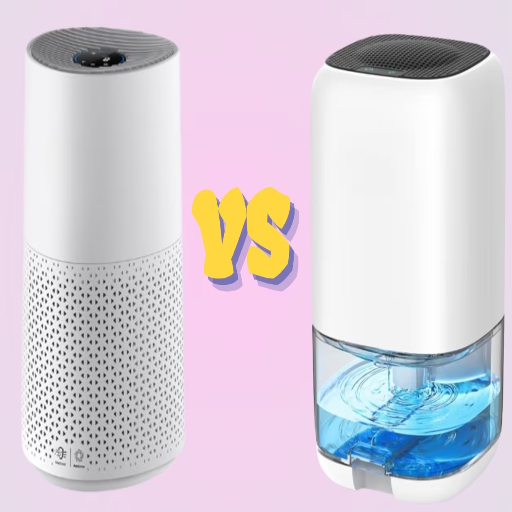Understanding Dehumidifiers
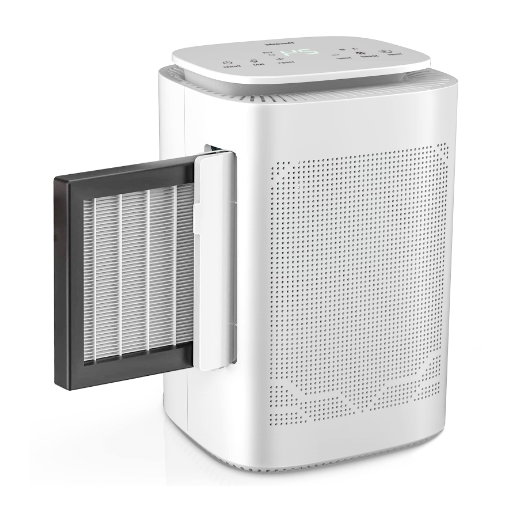
How a Dehumidifier Works
Designed for removing excess moisture in the air, a dehumidifier serves to keep the humidity level optimal. Warm and humid air travels inside through the intake vent of the machine and goes across the refrigerated coils. Because of the difference in temperature, moisture in the air condenses into water droplets that are stored in a tank or drained away through an attached hose. The drier air is then heated to a comfortable temperature and released back into the environment.
The effectiveness of a dehumidifier depends upon variables such as room size, temperature, and humidity level. Most dehumidifiers offer adjustable settings so users may select their desired humidity levels, usually anywhere between 30%-50% for comfort and health. Some advanced units have sensors that automatically adjust their operations based on current humidity readings or timers that allow them to run only at designated times to save power.
Such machines are very handy in the humid areas of basements, bathrooms, and other areas with very limited ventilation. By removing the moisture from the air, these machines keep mold, mildew, and house dust mites away, as all these organisms are most active in moist conditions. Proper humidity levels also enhance the protection of furniture, techno gadgets, and construction materials from moisture-related damage and continue their presence for a longer time while allowing a healthy indoor living atmosphere.
Benefits of Using a Dehumidifier
- Keeps Mold and Mildew at Bay: Excessive humidity is a perfect recipe for mold and mildew formation. Studies show that if the internal humidity level is above 60%, the chances of mold formation rise significantly. Dehumidifiers maintain an optimal humidity level (30%-50%), thereby preventing the formation of mold and mildew.
- Reduces Dust Mites and Allergens: Conditions of high humidity are favorable for dust mites. These mites can trigger allergies and asthma. Dehumidifiers reduce the population of dust mites by keeping the humidity level low, thereby improving air quality and reducing allergic symptoms. Research demonstrates that by dropping the humidity below 50%, allergen activities can be greatly minimized.
- Protects Furniture and Material: High humidity brings damage to wood-made furniture, metal components, and other household materials by way of encouraging rot, rust, or warping. A dehumidifier helps protect these items by controlling moisture, thus extending their lifespan and reducing upkeep costs.
- Increases HVAC Efficiency: Moisture-laden air normally causes the HVAC system to work extra hard in cooling down the space, thereby expending more energy. By eliminating the excess humidity, a dehumidifier improves the efficiency of the HVAC and helps in saving up to 15% of energy, according to energy management studies.
- Provides Comfort and Enhances Well-Being: An indoor environment that has too much moisture could make a temperature feel hotter and uncomfortable, and lead to restlessness. The dehumidifier is maintained so as to keep the humidity regular, which in turn makes life comfortable. Moreover, maintaining a good humidity balance could enhance sleep quality and overall wellness just by helping to lessen the risk of respiratory issues.
A dehumidifier, in short, is an effective and practical way to maintain a healthy and comfortable indoor space, preserve property, and improve air quality.
Understanding Air Purifiers
How an Air Purifier Works
An air purifier is an item intended to improve indoor air quality by removing impurities and particulates in the air. The central working of an air purifier consists of an interplay of filtration systems, airflow mechanisms, and advanced technologies. Every incoming air stream is filtered through a series of filters: a pre-filter that traps larger particulates like dust or pet hair; a fine HEPA (High-Efficiency Particulate Air) filter that traps smaller particulate matter such as pollen or mold spores; and usually an activated carbon filter that absorbs odors and VOCs (volatile organic compounds).
Additionally, some air purifiers use UV-C light technology that disrupts the DNA of airborne bacteria and viruses to stop their proliferation in the air. Ionizers emitting negative ions are one of several other options, bonding with positively charged particles in the air so they clump together and settle from the breathable zone.
Air purifier effectiveness is often expressed in terms of Clean Air Delivery Rate (CADR), which is a measurement of how much filtered air is produced by the purifier every minute for a certain particle size, like smoke, dust, and pollen. Among the factors for choosing an air purifier should be CADR ratings for a given room size, noise level, and energy consumption for optimum performance. When air purifiers are well-maintained, with filters changed regularly and cleaning performed in accordance with manufacturer specs, airborne contaminants are significantly reduced for cleaner and healthier air.
Benefits of Using an Air Purifier
Health and comfort depend on good air quality indoors. This is where the air purifiers come in. Several particulates in the atmosphere, from dust, pollen, and pet dander, can induce allergies or trigger asthma; air purifiers keep particulate matter out. For example, HEPA filters trap 99.97% of dust particles just 0.3 microns in diameter, effectively removing most allergens.
Another very important function is to remove adverse odors due to the presence of other contaminants, such as VOCs and smoke, which can enter indoor environments from cleaning activities and outdoor infiltration. It’s really the job of an activated carbon filter that adsorbs gases and odors, thus minimizing our exposure to chemicals and enhancing our respiratory health.
UV-C-based air cleaning systems can assist in destroying airborne microbes and some parasites, including bacteria and viruses, which curb the spread of various diseases in common areas. In addition, many modern air purifiers have smart sensors that monitor air quality in real-time and automatically adjust filtration levels for maximum effectiveness and ease of use.
With their energy efficiency and unsophisticated installation and operation, air purifiers will continue Low operating cost makes air cost-efficient solution for long-term applications. When complemented with the correct room size rating of CADR (Clean Air Delivery Rate) and handled through proper maintenance, air purifiers can greatly enhance indoor environments, cleansing air for healthier living. Studies have also shown that high air quality will lead to better satisfaction with sleep, thus positioning air purifiers as great agents for living spaces in bedrooms.
Common Misconceptions about Air Purifiers
One of the most prevalent misconceptions about air purifiers is that they eliminate all pollutants and allergens instantly. While modern air purifiers equipped with HEPA filters can effectively capture up to 99.97% of airborne particles as small as 0.3 microns, their efficiency depends on factors such as room size, airflow, and proper usage. Another misunderstanding is that air purifiers negate the need for regular cleaning. While they can significantly reduce airborne particles, pollutants that settle on surfaces still require direct cleaning methods like vacuuming and dusting.
Some individuals also believe air purifiers are solely beneficial for those with allergies or respiratory conditions. However, ongoing research highlights their broader advantages, such as reducing particulate matter (PM2.5) levels and volatile organic compounds (VOCs) that impact overall air quality, benefiting everyone. Furthermore, the misconception that all air purifiers remove odors or hazardous gases should be addressed. Only models with activated carbon filters or technology specifically designed for chemical absorption can effectively neutralize odors and gaseous pollutants. It’s also a myth that air purifiers consume excessive electricity; many are engineered for energy efficiency, even with Continuous Use settings.
By understanding these nuances and selecting air purifiers tailored to specific needs—based on specifications like Clean Air Delivery Rate (CADR) and filter type—consumers can make informed decisions and maximize the technology’s benefits.
Dehumidifier vs Air Purifier: A Comparison
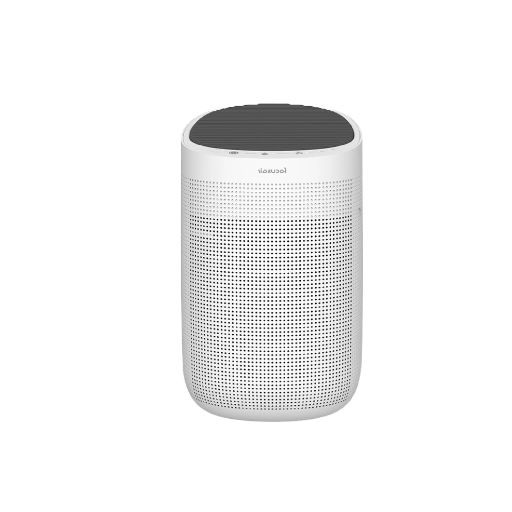
Key Differences between Dehumidifiers and Air Purifiers
| Feature | Dehumidifier | Air Purifier |
|---|---|---|
| Primary Function | Removes excess moisture from air | Filters out airborne particles and contaminants |
| Target Issues | High humidity, mold, mildew, dust mites | Allergens, dust, pollen, pet dander, smoke, odors |
| Optimal Humidity Range | Maintains 30-50% humidity | Does not affect humidity levels |
| Filtration Technology | Refrigerated coils for condensation | HEPA, activated carbon, UV-C light |
| Best Use Cases | Basements, bathrooms, humid climates | Bedrooms, living areas, and allergy sufferers |
| Energy Efficiency | Can reduce HVAC load by up to 15% | Generally energy efficient with continuous use |
Can They Work Together Effectively?
The effectiveness of using multiple technologies for air purification depends on their compatibility and whether they tackle different types of airborne contaminants in the air. Now, in cases where the contaminants consist of particulate matter, like dust, pollen, or pet dander, the best method is a HEPA filter; meanwhile, activated carbon will best adsorb VOCs and odors. The application of both together offers a broader solution, so it attacks aerosolized pollutants on either side of the particulate-gas divide.
They may also use ultraviolet light or photocatalytic oxidation to aid in air disinfection against pathogens in the air, namely bacteria and viruses, thereby offering an extra boost to the overall quality of air. It is a catch, however, to get them configured and tested correctly, so as not to go into the unintended byproduct of producing excessive ozone. Other factors to bear in mind regarding the combination use of technologies include the airflow rate, filter lifespan, and noise level to ensure their best operational performance.
Consumers should take advantage of the state-of-the-art technologies, provided they are well-installed and maintained, so that the synergistic benefits can be enjoyed without any compromise in energy efficiency or safety standards. This strategy necessitates a thorough assessment of the technical specifications of each product, implying that submissions based on authoritative sources, product certifications, and ongoing scientific research are needed to support this decision-making.
Use Cases for Dehumidifiers and Air Purifiers
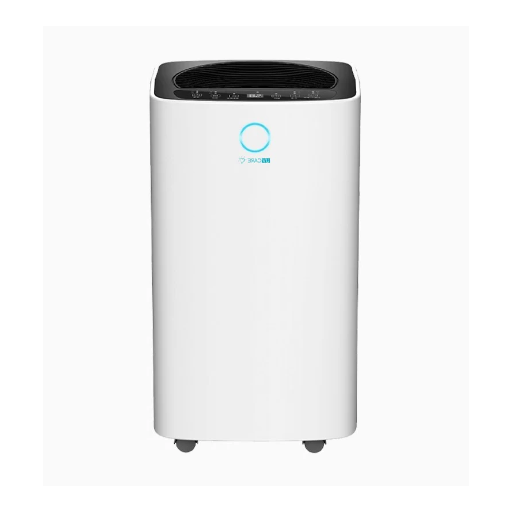
Managing Allergies and Asthma
Dehumidifiers and air purifiers operate amicably in enhancing indoor air quality, especially for allergy and asthma sufferers. Dehumidifiers remove excess moisture. Excess moisture creates conditions primed for dust mites, mold, and mildew-also common allergens that can aggravate respiratory conditions. Ideally, as advised by experts, maintaining indoor humidity levels from 30-50% should keep these allergens at bay.
Air purifiers target airborne particulates, including pollen, pet dander, and fine dust. Those fitted with High Efficiency Particulate Air (HEPA) filters are the best, as they can trap 99.97% of particles as small as 0.3 microns. In fine air purifiers, activated carbon filters are also included to remove odors and chemical pollutants, further cutting down on asthma triggers.
The simultaneous application of these two devices is highly effective in fighting the causes of respiratory irritation. The CADR value of a device must be suitable for the room where it will be used, and frequent maintenance, such as changing filters, must be kept up with. Studies going forward even conclude that desiccation and air purification could significantly reduce emergency room admissions of asthma patients, thereby strongly confirming the positive effect of these technologies in the medical arena.
Controlling Humidity Levels
For health and building preservation reasons, maintaining correct indoor humidity levels is essential. It has been found that the relative humidity of indoor air should ideally hover between 30% and 50%. Humidity below this level dries skin, throat, and the respiratory tract, making infection a good possibility. Humidity above 60%, on the other hand, is ideal for mold growth, dust mites, and bacteria, which are all sources of allergens and asthma.
Advanced humidity control technologies like smart dehumidifiers and automated HVACs with embedded sensors have enabled humidity to be observed and manipulated in situ. For example, contemporary dehumidifiers apply hygrometers to get exact measurements and adjust accordingly with the gathered data. Also, systems that integrate dehumidification with air purification further exceed as a method for improving the indoor air quality by diminishing moisture as well as mopping up airborne particulates, allergens, and pathogens.
Recent studies have shown that microbial growth is severely arrested, in some cases even up to 80%, if relative humidity is maintained within optimum ranges of control, thereby emphasizing the settled integration of humidity control in total air quality control systems for the future of better living and working environments.
Improving Overall Indoor Air Quality
The attainment of a favourable indoor air quality level is one that needs to be approached from varied perspectives, considering all contributing aspects. Ventilation is one important element; sufficient air change rates dilute pollutants arising within buildings and pull in fresh air from outside. Mechanical ventilation systems fitted with HEPA filters are much more effective in filtering particulate matter such as PM2.5 and PM10.
Managing humidity continues to be another factor, as keeping levels between 30-50% RH minimizes mold growth and dust mite survival while ensuring occupant comfort. Advanced air purification technologies, including UV-C light and photocatalytic oxidation, inhibit microorganism activity and destructive VOCs.
It is essential to control indoor pollution sources on a thoroughly basis. That includes the reduction of VOC-emitting products such as certain cleaners and paints, and measures that mitigate combustion-related pollutants coming from stoves or fireplaces. The integration of smart sensors that monitor air quality in real time can help translate such metrics into actionable insights for dynamic HVAC adjustments. Together, these measures can render indoor environments with much lower pollutant levels, creating safer and healthier conditions for occupants.
Choosing the Right Device for Your Needs
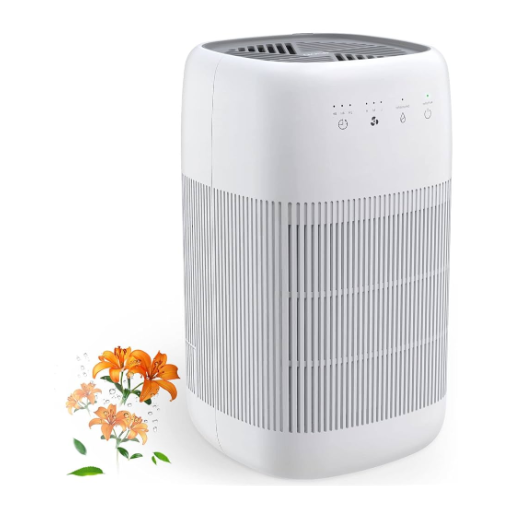
Factors to Consider: Room Size and Climate
My priority when choosing a device to optimize indoor air quality is to evaluate the size of the room it will serve. Small spaces require devices with lower Clean Air Delivery Rates, while large rooms need systems with higher CADR values, so that air circulation is considered superior and contaminant removal is effective. If this issue is considered with precision, then there will be no scenario where less powerful systems cannot adequately perform, and energy cannot be wasted by those systems being too large for the intended use.
The second priority is to look for the climate of the area in which the device shall be operating. For humid climates, I tend to select devices with dehumidification so that molds will not grow in these environments rich in moisture. On the other hand, in dry climates, my preference tends toward combinations with humidification capacity, jointly with air purification. Both solutions guarantee that the air indoors will exceed pollutant criteria and create a comfortable environment suited to ambient outdoor conditions.
Then I think about the effect of seasonal variations on the versatility of the device. For instance, when areas are faced with extreme temperature fluctuations, my selection switches to those devices that work well with an HVAC system able to carry them through the year, adapting properly to changes in humidity, temperature, and airborne particulate levels. The emphasis on compatibility with the needs posed by a certain environment, both from the dimension of the room but also the local climate, results in a very tailored and efficient way of providing good indoor air quality throughout the entire year.
Air Purifier or Dehumidifier: Which One is Right for You?
When you are choosing between an air purifier and a dehumidifier, you really have to think about your indoor environment and the problems you want to have solved. Air purifiers remove contaminants, such as dust, pollen, pet dander, mold spores, and smoke particles. Air purifiers work by filtering air through various technologies, for instance, HEPA, activated carbon, or UV-C light purification. Air purifiers are valuable for people who suffer from allergies, asthma, or are sensitive to particulate matter.
A dehumidifier, conversely, is capable of controlling moisture in the air by relative humidity. Generally, an optimal indoor RH is purported to be between 30 and 50 percent; above this threshold, high humidity enables the formation of mold and mildew along with dust mites and elevates the levels of risks to health and concerns to property. Maybe through refrigeration or desiccant technology, dehumidifiers work to soak moisture from the air and thus allow humidity to be managed for comfort and hygiene.
In the first step, identify which is the dominant problem in your space. If allergens or airborne pollutants are an issue, then an air purifier would be a possible solution. On the other hand, if it is the moisture-causing issues—condensation on the walls, dampness of the floor, smell of mold, etc.—put the dehumidifier above all else. Depending on the exact local conditions, an ideal indoor environmental control interface could consist of both instruments put into working in unison, especially when air quality is a variable concern, whereas humidity is perpetually high.
References
- University of Rochester Medical Center – Air Filters, Dehumidifiers, and Humidifiers: This source provides insights into air-filtration systems and their role in improving indoor air quality.
- University of Massachusetts – Indoor Air Quality: This page discusses the use of dehumidifiers to manage indoor humidity and improve air quality.
- Harvard Health – Easy Ways to Improve Indoor Air Quality: Offers strategies for improving indoor air quality, including the use of air purifiers and dehumidifiers.
- ENERGY STAR – Air Cleaners: Provides information on air cleaners (air purifiers) and their effectiveness in removing fine particles from indoor air.
- US Environmental Protection Agency (EPA) – Guide to Air Cleaners in the Home: A comprehensive guide on air purifiers, their functionality, and their role in improving indoor air quality.

